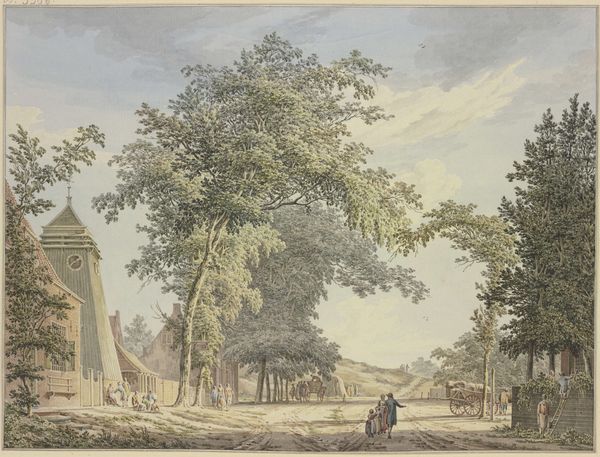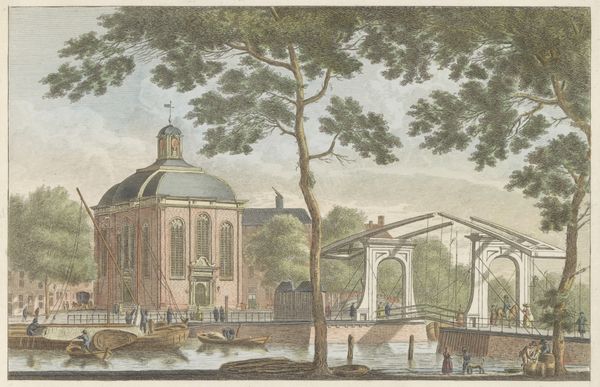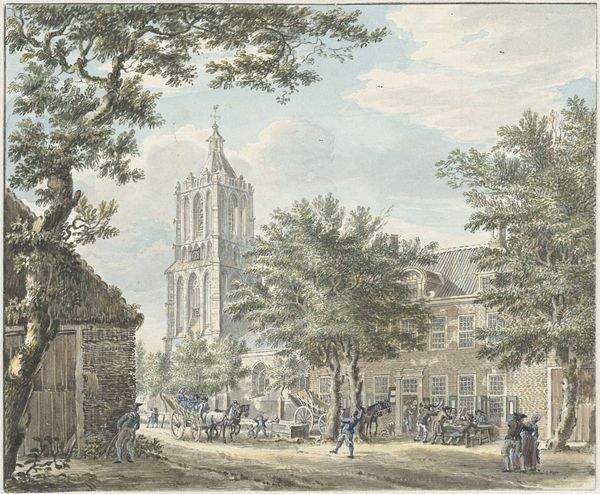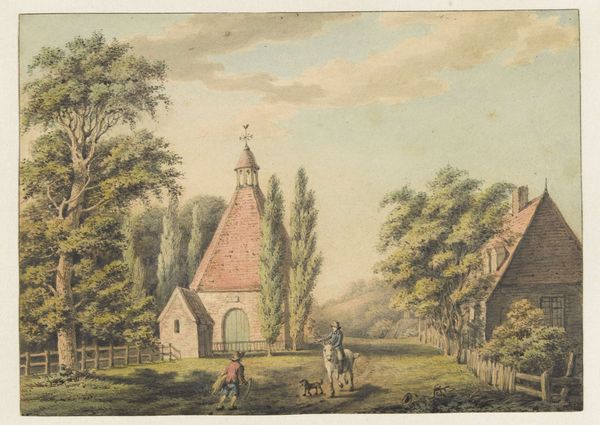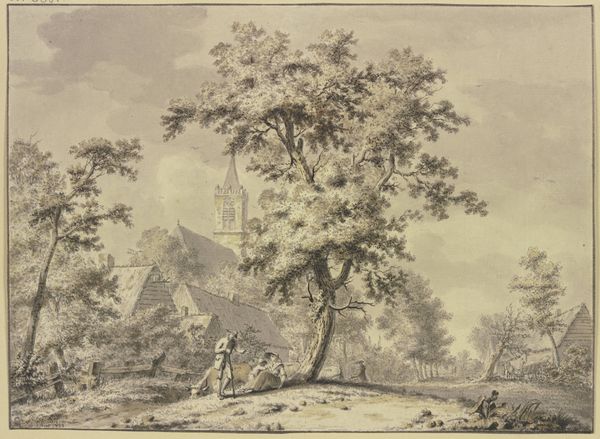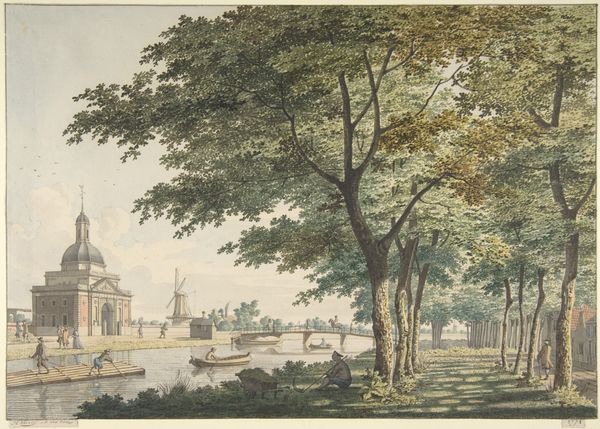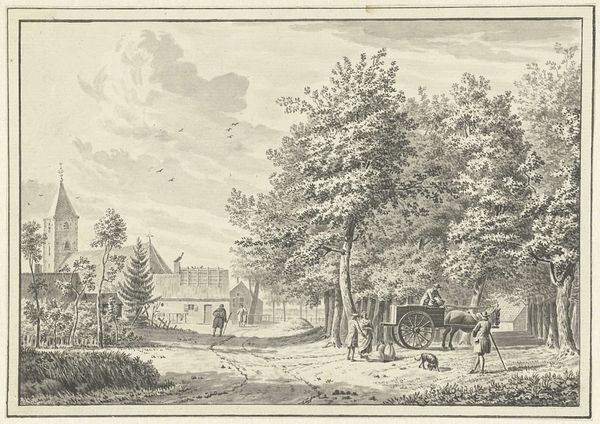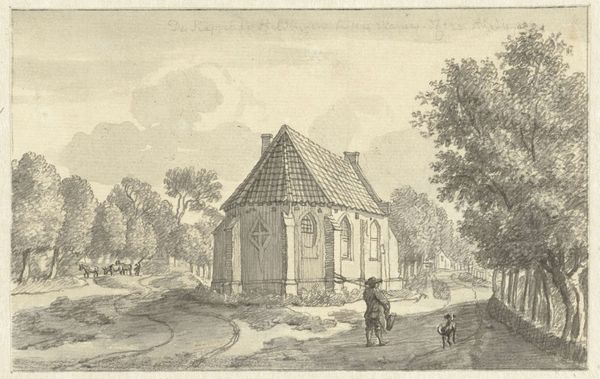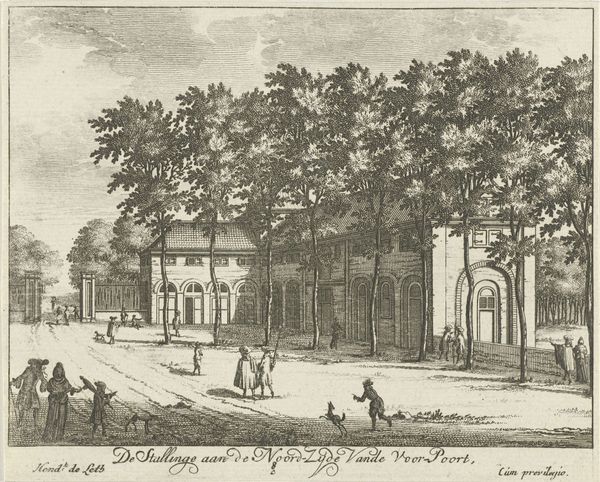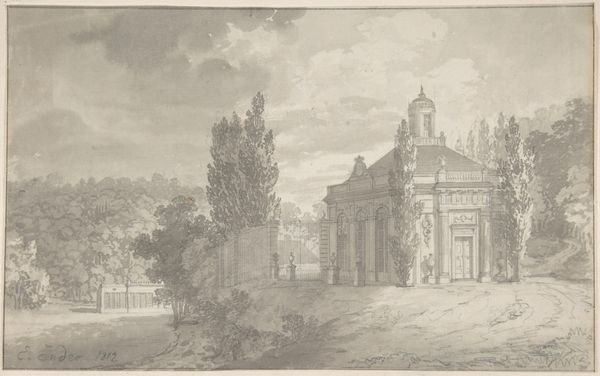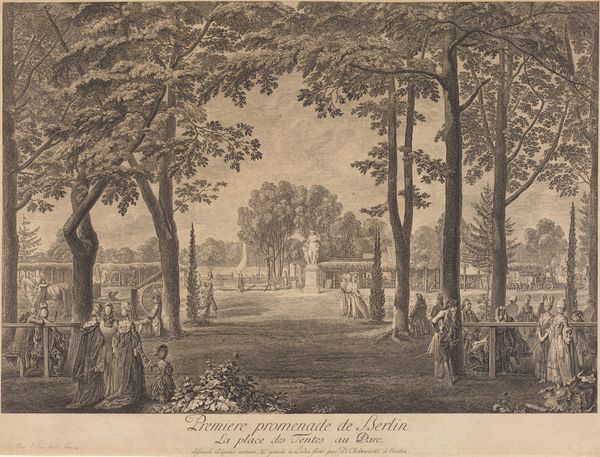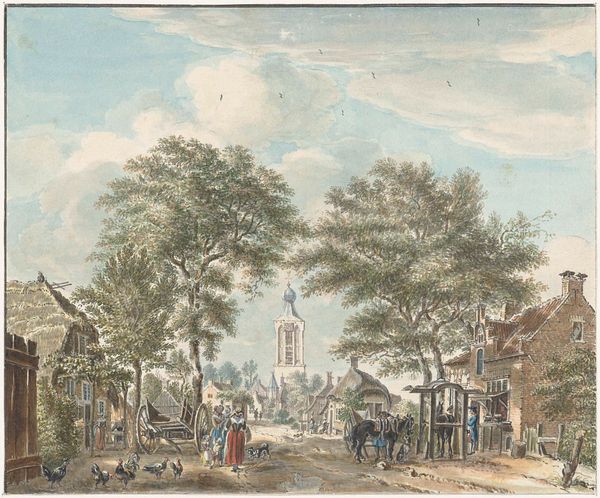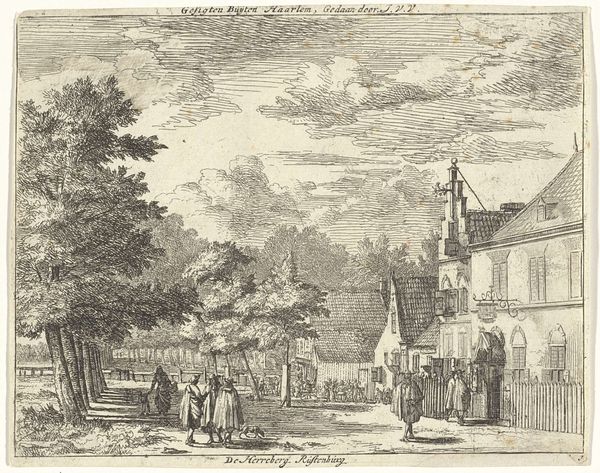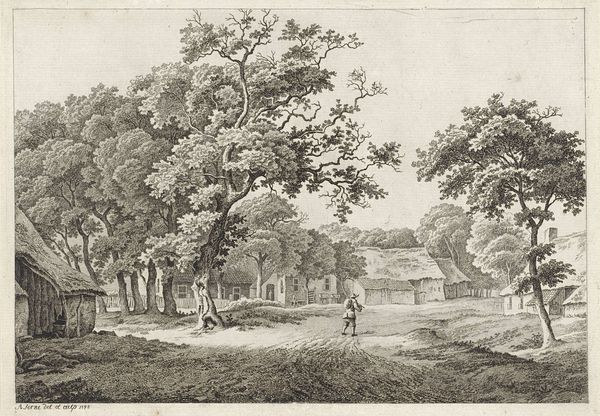
Stadttor mit Türmchen im Sommer, eine lange Brücke führt über den Kanal nach einer Allee, in der eine Equipage fährt
0:00
0:00
drawing, plein-air, watercolor, architecture
#
drawing
#
plein-air
#
landscape
#
watercolor
#
coloured pencil
#
15_18th-century
#
watercolor
#
architecture
Copyright: Public Domain
Curator: Before us, we have a landscape scene by Hermanus Numan entitled "Stadttor mit Türmchen im Sommer, eine lange Brücke führt über den Kanal nach einer Allee, in der eine Equipage fährt," housed right here at the Städel Museum. What strikes you first about it? Editor: There's a calmness here, a serene order. The subdued palette of watercolors gives the scene a feeling of a washed out utopia. Everything is neatly organized—the gate, the bridge, the carriage... It all seems a bit too picturesque, staged almost. Curator: Interesting observation. We see here how Numan employs watercolor, likely en plein air, capturing a fleeting moment in time and reflecting perhaps a growing bourgeois sensibility obsessed with manicured nature and idyllic leisure. Consider also who is granted access across this bridge versus those who are not. Editor: Right. The application of watercolor is quite masterful here, and is integral to understanding the composition of power being illustrated: from the way the building is framed, and rendered; it seems like an idealized architectural drawing, a promotion of design as much as an everyday moment. Notice how there seems to be as much work involved with painting the figures of workers and travelers as with their opulent surrounding: that is a calculated perspective and choice of application on the author's part, who has complete mastery. It highlights the value attributed to architecture at the time and a mastery of plein-air in of itself. Curator: I think you're absolutely correct. The act of creating this image within this context speaks volumes. Was it intended to be a record, or perhaps something more propagandistic? Who commissioned this and what narratives were at play within the artist's world when making such detailed compositional choices in material and technique. Editor: Precisely! The entire scene speaks to labor and consumption. Every aspect, from the types of paints chosen to the way light interacts with surfaces, reveals so much about social and artistic structures of the time. The artist could simply choose a scene or an action, it doesn't fall down at the place one could perceive something banal if one looked to extract material value. Curator: Examining it closely through both our perspectives really brings the details of that historical context into sharp relief and informs and reminds one of how this period produced images like this one that reflect and shape contemporary values. Editor: Absolutely! It reminds us that seemingly simple scenes like these were actively constructed within a world defined by its resources and it's relationship between class, economy, architecture and industry.
Comments
No comments
Be the first to comment and join the conversation on the ultimate creative platform.
